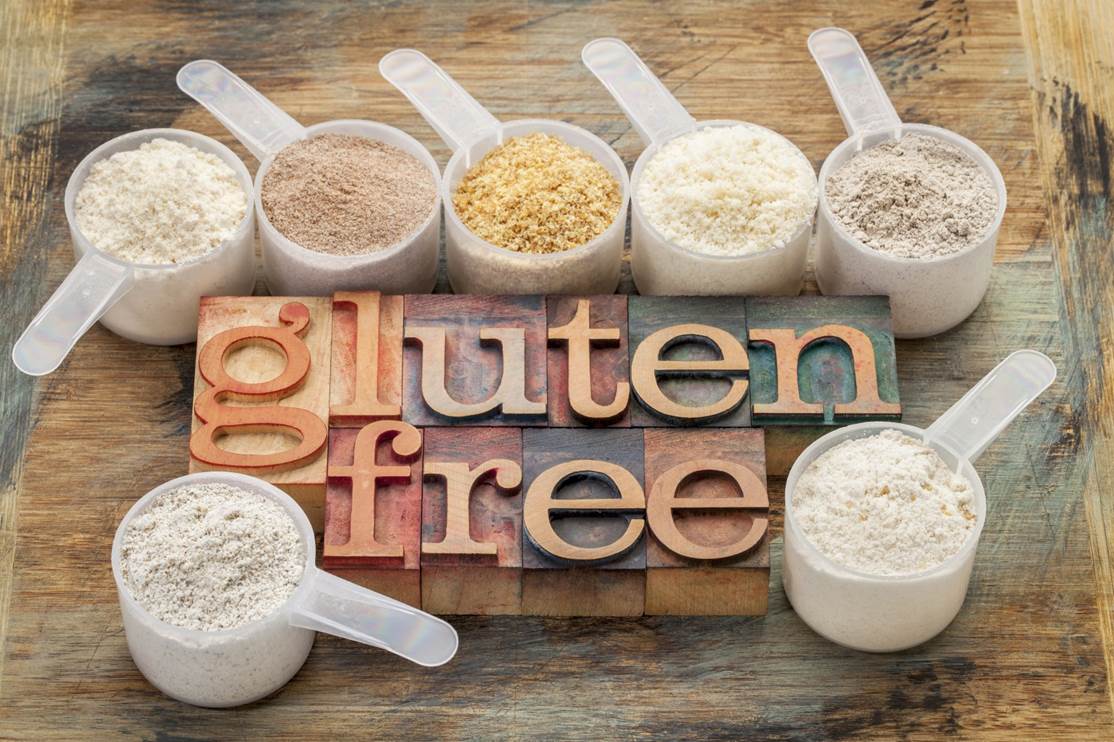Going gluten-free seems to be the talk of Diet Town. But is gluten that unhealthy for you? The answer is mixed, depending on how you interpret the research and whose research you are reading. There are many articles and books on the subject with varying opinions. However, with any health topic, you should consider the source of where the view generated from and the research studies cited. The information should be based on sound nutrition principals that have stood the test of time. A credible source on whole grains comes from the 2010 Dietary Guidelines for Americans and the Whole Grain Council.
Recommended Serving of Whole Grains
To be considered a whole grain, the grain must contain the whole seed/kernel with the bran, germ, and endosperm. Whole Grains are good sources of the B Vitamins, magnesium, iron, selenium and dietary fiber. Enriched grains contain the B vitamins (thiamin, riboflavin, niacin, folic acid) and iron. The 2010 Dietary Guidelines states the recommend serving of grains for an adult should be; six (1 oz) servings, with half being from whole grains.
What is Gluten?
Gluten is a protein found in some whole grain products, mainly wheat, rye and barley. For some, products that contain gluten can be hard to digest and can wreak havoc on the digestive system of individuals that are gluten sensitive or have celiac disease. However, the occurrences are very low in the general population.
Statistics
Statistics show that only 1-2% of the population may have true celiac disease while 0.2-0.4% of the population is allergic to wheat. However, the jury is still out for the rest of the population as new research states show that non-celiac gluten sensitivity may not exist. For some, gluten can cause serious health problems, but for the majority of the population, there is no reason to eliminate or miss out on the health benefits of gluten containing whole grains.
Testing
If you think you have celiac disease or gluten sensitivity, you should consult your physician. A series of tests specific to celiac disease that can help diagnosis the problem are; Anti-tissue Transglutaminase Antibody; tTG; tTGA; Endomysial Antibody; EMA; DGP; ARA and Total IgA. Only your physician can determine your diagnosis.
Gluten Free and Gluten Containing Whole Grains
Whole grains can either contain gluten or be gluten free. There are many sources of whole grains to choose from that contain gluten or is gluten free.
Whole Grains Containing Gluten
Whole grains that contain gluten are: Wheat, Spelt, Kamut, Durum, Semolina, Bulgar, Farro, Barley, Rye and Triticale
Gluten Free Grains
Amaranth, Buckwheat, Corn, Millet, Montina, Oats, Quinoa, Rice, Sorghum, Teff and Wild Rice. Even though oats are considered gluten free, they are usually processed in a plant with wheat which could result in cross contamination. Read the label carefully.
Don’t’ Miss Out On the Nutrients of Whole Grains
When it comes to whole grains, you first and foremost should understand that whole grains contain a megaplex of nutrients that provide the building blocks for chemical reactions needed to carry out and maintain bodily functions. Without these nutrients, your body would become sluggish and vulnerable to a myriad of diseases.
Gluten, Belly Fat and Diet
This topic is where the hype of cutting out wheat and gluten from your diet comes into play. Many books have been written, and diet programs promoted claiming wheat and gluten are responsible for weight gain and inflammation. But first, let’s take a look of at the following research studies that contradict this advice.
All of these studies indicate that whole grains are associated with a healthier weight, lower belly fat, and better health. We also know that fiber is crucial to the digestive track as it helps flush out toxins and wastes. Fiber also aids in the prevention of colon cancer, helps reduce the risks of cardiovascular disease and type 2 diabetes while also being associated with lower body weight. As you can see these research studies are very credible and sound. Therefore, you should think twice before giving up all of these health benefits if you don’t have a medical reason to do so.
Research Studies
Center for Disease Control’s (CDC) on-going National
Health and Nutrition Examination Survey (NHANES)
- Nurses’ Health Study I and II
- Women’s Health Study
- Prostate, Lung, Colorectal, and Ovarian Screening Study
- Health Professionals Follow-up Study
- Canadian National Breast Screening Study
Grains and the Glucose- Insulin Response
Grains are higher in calories than fruits and vegetables and are mostly carbohydrates. The glucose and starch found in wheat and grains can rapidly absorb into the bloodstream. However, no need to be fearful of carbohydrates as they provide energy. It is all about timing and moderation. The key to eating grains is to minimize the glucose-insulin response. Grains can be a healthy choice in losing weight as long as you are not sending your blood glucose levels soaring. Grains contain carbohydrates in the form of glucose and starch, both of which can raise your blood glucose levels quickly. To maintain a healthy blood glucose level, one must control the hormone glucose-insulin response. Insulin is a fat storing hormone that is initiated when the body needs to lower the blood glucose level. Insulin escorts excess glucose right to the cell where the glucose is converted to fat and stored for later use.
Tips:
Instead of cutting out wheat and whole grains from your diet, try these few tips. Eat whole grains instead of empty processed flours. Eat grains with protein and fat to slow the digestion process and avoid the spike of your blood glucose levels. Spread the grains out throughout the day.
Eliminating a Food Group?
Eliminating a food group is probably not the wisest thing to do when it comes to your health. Grains are an important part of a daily diet and weight reducing diet. Grains provide an array of phytochemicals that protect, nourish and promote a healthy body.
If you need to lose weight, choose a diet plan that includes all of the food groups, encourages exercise, controls portion size, tracks calories and promotes a variety of fresh, wholesome foods.
nutritionfactors.com offer the free Grid Diet Plan to help you succeed at all of your weight and health goals. Sign up for your free account today.
References:
- McKeown, Nicola, Troy, Lisa, Jacques, Paul, Hoffmann, Udo, J. O’Donnell, Christopher, S. Fox, Caroline. Whole-and refined-grain intakes are differentially associated with abdominal visceral and subcutaneous adiposity in healthy adults: the Framingham Heart Study. Am J Clin Nutr 2010;92:1165-71.
- 2. Gaesser, G. Carbohydrate Quantity and Quality in Relation to Body Mass Index. JADA 2007; 107: 1768-1780.
- Porikos K, Hagemen S. Is fiber satiating? Effects of a high-fiber preload on subsequent food intake of normal-weight and obese young men. Appetite 1986; 7: 153-162.
- Montonen J, et al. Whole-grain and fiber intake and incidence of type 2 diabetes. Am J Clin Nutr. 2003; 77:622-629.
- Steffen LM, et al. Associations of whole-grain, refined grain, and fruit and vegetable consumption with risks of all-cause mortality and incident coronary artery disease and ischemic stroke: the Atherosclerosis Risk in Communities (ARIC) Study. Am J Clin Nutr. 2003; 78:383-390.
- Liu S, et al. Relation between changes in intakes of dietary fiber and grain products and changes in weight and development of obesity among middle-aged women. Am J Clin Nutr. 2003; 78: 920-927.
- Qi L, et al. Whole-grain, bran, and cereal fiber intakes and markers of



